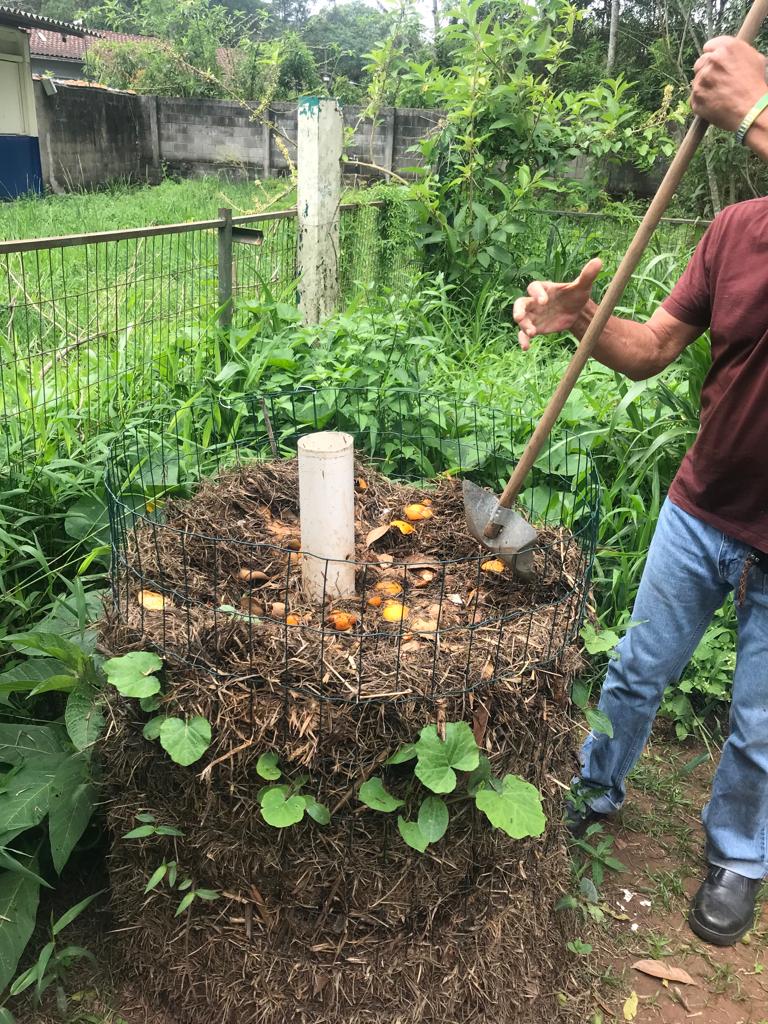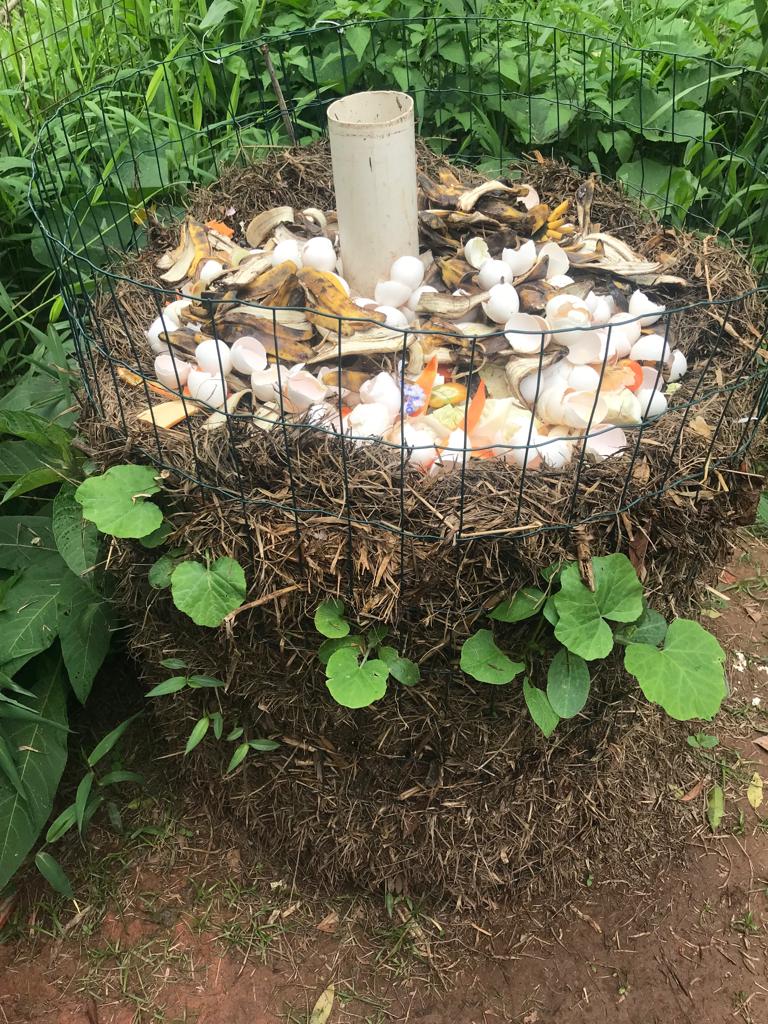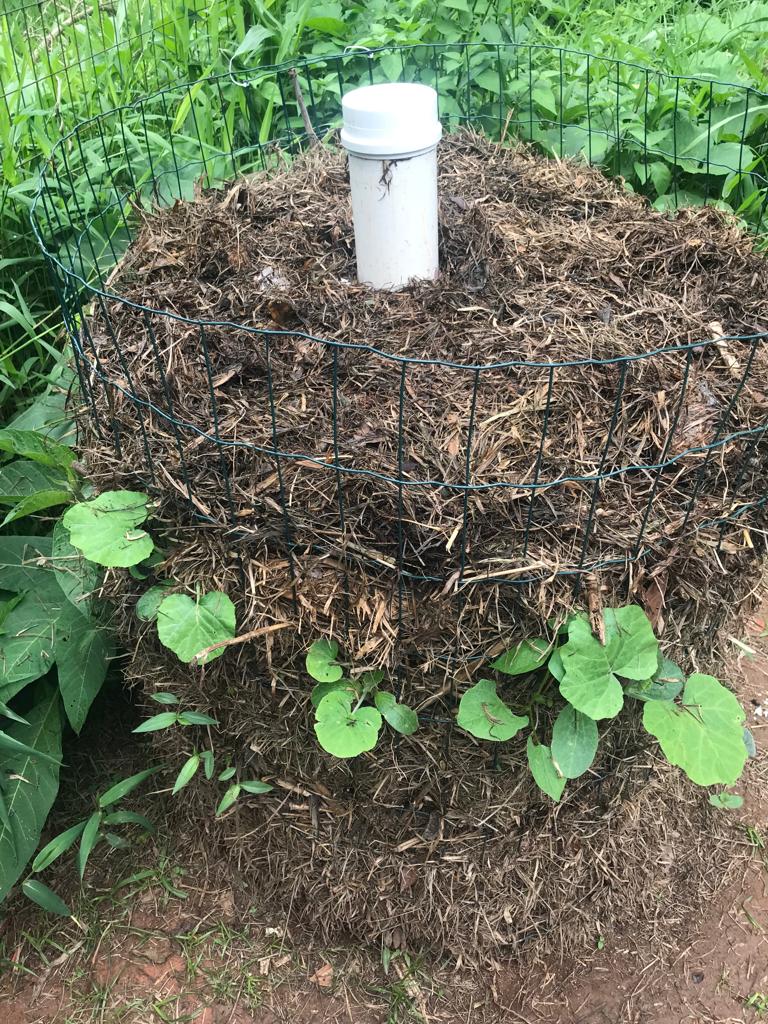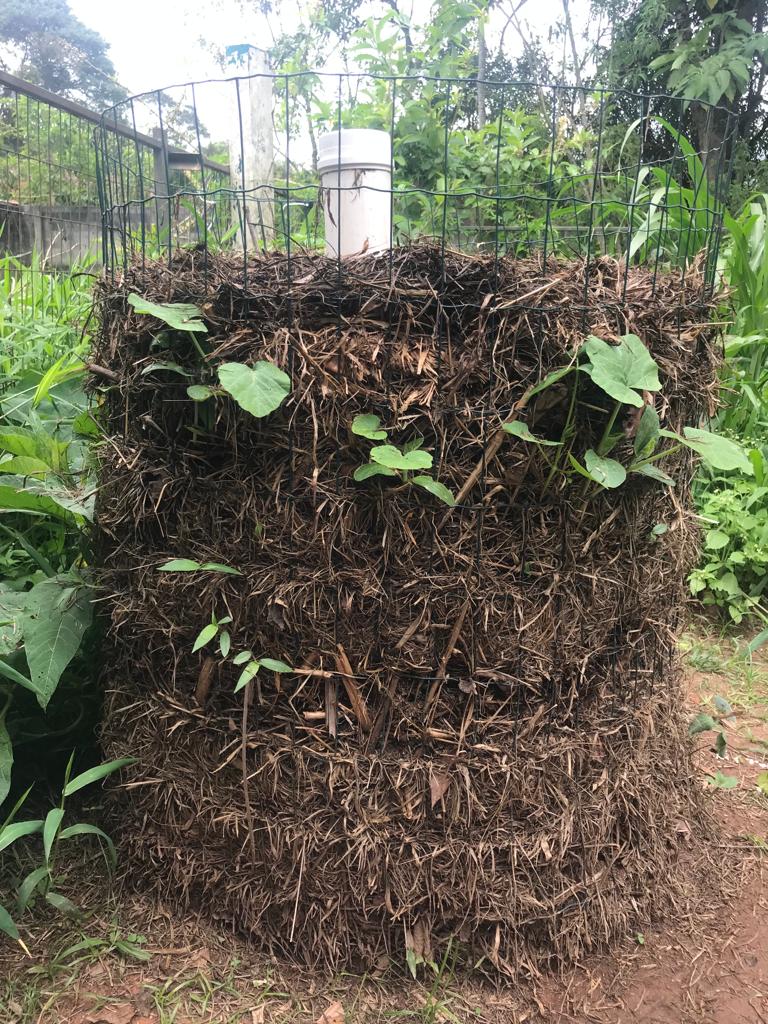| Group of Socioenvironmental Practices Colégio Estadual Antônio Quirino Visconde de Mauá, Resende RJ Composting the organic residues from the school kitchen |
 |








|
|||
 |
 |
||
| Above, the cylindrical composter made with wire mesh 1m high and 1m in diameter. Started 4 months ago, it has already received more than 259 kg of organic waste, raw vegetables (average of 3 kg per day). | The perforated pipe allows hot air generated by the activity of microorganisms to escape over the top, drawing in fresh air from outside and creating a circulation of air through the material that accelerates decomposition. | ||
| Below, removing the grass straw that covers the waste to the sides, close to the screen, forming a little wall around a recessed 'nest' in the center. | The day's waste is deposited in the center of the cylinder. On this day, October 18, 2022, 4.8 kg of organic waste were introduced. | ||
 |
 |
||
 |
 |
||
| Above,
the waste is deposited in the central area of the cylinder.
|
Now, just cover the fresh waste with a new layer of dry material. | ||
| Below,
the compost with the fresh residues covered and ready to receive the
next day's waste. |
In just over 500 cubic liters, more than 250 kg of waste that will become fertilizer for gardens and gardens. | ||
 |
 |
||
| School composting includes weighing the waste and recording the amounts introduced daily, bringing a technical dimension that will allow for various research on the activity. | |||